Textbooks in Transition
Universities adopt free, online course materials pg. 28

Forks’ Firsts Grand Forks leads country in UAS evolution pg. 32
Top 10 Trends
Engineers, architects discuss key industry shifts pg. 36

Universities adopt free, online course materials pg. 28

Forks’ Firsts Grand Forks leads country in UAS evolution pg. 32
Top 10 Trends
Engineers, architects discuss key industry shifts pg. 36

KLJ has operations in 23 different locations employing over 750 professionals. With KLJ’s significant growth, reliable network connectivity is a priority. DCN consistently provides outstanding services to meet KLJ’s growing needs as a corporation. DCN’s services give KLJ the capability to directly collaborate between offices via their Ethernet connections utilizing DCN’s fiber network.
“DCN has proven to be a trusted advisor by providing quality service and expertise for our corporate technology needs for more than 10 years. The ability to work on our systems remotely has allowed efficient network management of KLJ’s 23 office locations, allowing us to grow and maintain a collaborative working environment throughout our corporation and respond quickly to client needs through stable internet connections and high upload speed.”
“The quality service DCN provides has fostered a unique partnership between DCN and KLJ.”
Kenneth Redinger, Information Technology Director, KLJ Dakota Carrier Network Customer
 D. MOHR
D. MOHR













As incoming college students consider how much money they’ll need to borrow for tuition, they aren’t always thinking about interest accrual or how long they’ll be repaying. Or they don’t care. That was certainly true for me, and now, almost 10 years out of college, I’m still paying back student loans. Was the extra cash I borrowed to cover textbook costs, rent and ramen noodles worth it? No.
But it seems colleges and universities are making a shift that will save students hundreds or thousands of dollars on their textbooks — money many don’t realize will pile up so quickly. Free online educational resources allow professors and instructors to compile vetted material from multiple sources, tailoring their curriculums for each class. It’s more work than choosing and ordering a textbook, but with the proper administrative support, switching to OERs doesn’t have to be difficult. And it’s worth it, says an English professor at Valley City State University in Valley City, N.D. Her students so far have appreciated the savings and she enjoys custom-building her own course. Find out more about her class and others that use OERs, why they aren’t catching on faster across the country, and what types of funding are available for colleges looking into the transition, starting on page 28.
This issue features our third Community Profile of the year, this time highlighting the business environment in sister cities Grand Forks, N.D., and East Grand Forks, Minn. This roundtable was different from the others, as Grand Forks boasts two unique elements: the country’s first unmanned aerial systems (UAS) business park and an Air Force Base. Grand Sky is still under construction but is well-known in the UAS industry around the world and is expected to lead the country’s UAS evolution. Meanwhile, the Grand Forks Air Force Base had a $220 million economic impact on the region last year. These two attributes certainly top the list of focal points for a meeting with city and business leaders, but we also addressed the workforce shortage, downtown vibrancy, ongoing construction, tourism and the ag industry. Read more about Grand Forks and East Grand Forks starting on page 32.
In this month’s architecture and engineering feature, we talked to four experts in the industries and laid out 10 major trends they’re seeing. Some are challenges and some are profound and meaningful advancements, but I think they’re all interesting and thought-provoking. How clients choose to spend their money, socially and environmentally responsible designs, and new technologies are some of the key aspects of architecture and engineering that we think you should know about. Turn to page 36.

Nick Killoran is the focus of the Business Insider, starting on page 26. It’s impressive how he built Great North Insurance Services in West Fargo, N.D., from scratch, with zero existing clients. He’s clearly doing something right, as his business is growing, and he walked away from The Chamber of Fargo-Moorhead-West Fargo’s 2016 ChamberChoice Awards with Small Business of the Year. Check out Construction Corner, a profile of a brand new, $40 million bank coming to Bismarck, N.D., on page 38. And Prairie News is packed with even more coverage ranging from health care and cancer treatments to higher education and employee recruitment platforms.
You’ve cracked open an especially full issue of Prairie Business that covers a little bit of everything. Enjoy.

KORRIE WENZEL, Publisher
STACI LORD, Ad Director
LISA GIBSON, Editor
KAYLA PRASEK, Staff Writer
BETH BOHLMAN, Circulation Manager
KRIS WOLFF, Layout Design, Ad Design
Account Executive: NICHOLE ERTMAN
800. 477.6572 ext. 1162
nertman@prairiebusinessmagazine.com
Prairie Business magazine is published monthly by the Grand Forks Herald and Forum Communications Company with offices at 375 2nd Avenue North, Grand Forks, ND 58203.
Qualifying subscriptions are available free of charge. Back issue quantities are limited and subject to availability ($2/copy prepaid). The opinions of writers featured in Prairie Business are their own. Unsolicited manuscripts, photographs, artwork are encouraged but will not be returned without a self-addressed, stamped envelope.
Subscriptions Free subscriptions are available online to qualified requestors at www.prairiebusinessmagazine.com
Address corrections
Prairie Business magazine

PO Box 6008
Grand Forks, ND 58206-6008
Beth Bohlman: bbohlman@prairiebusinessmagazine.com
Online www.prairiebusinessmagazine.com
One of the responsibilities of owning plant, property and equipment is determining the proper level of maintenance to ensure the assets equal or exceed their expected productive life. In addition to achieving the best productive capacity, general maintenance says a lot about an organization’s attitude and culture.
During the good years in the Iron Range area of northeast Minnesota, several exceptional buildings were constructed. They have incredible workmanship from hand-crafted woodwork to solid granite and marble floors. These buildings were meant to last and provided a showcase of the talent in the area. As mining and general business slowed down, necessary maintenance was left undone. Unfortunately, many of these buildings fell into disrepair and have been torn down. Keeping up the property was deemed too expensive — now many are gone, or are on the list to be destroyed.
The cultural aspect of “we can’t afford to fix it” and “it doesn’t matter” reveals truths about an organization
and its owners. If the paint is always peeling or the steps are not cleared of snow, it’s a pretty good indication of what’s going on at the business. Of course, every asset needs some attention occasionally, but constant neglect is different than a short-term repair need.
I recently toured two successful businesses. Both were conscientious about their facilities. One took me up to the maintenance shop via the back stairs. Despite the fact that usually only the employees use the back stairway, it was painted and sparkling clean. I was impressed. The organization has strict standards. The other facility was new and clean, but not exceptionally clean. It is nice, but it will show signs of wear quickly. Maintaining any equipment or property is expensive, but choosing to let things go undone is more costly in the long run. PB
Matthew D. Mohr CEO, Dacotah Paper Co. Fargo, N.D. mmohr@dacotahpaper.comIf you care about where you live, you do what you can to take care of the place. You volunteer, you give back, you help others, and you try to make the neighborhood better for everybody. That’s how we feel about this community. And that’s why we do what we do. For details, visit xcelenergy.com.

WE CARE ABOUT THIS COMMUNITY AS IF IT WERE OUR HOME, YOU KNOW, BECAUSE IT IS.







Employers and employees alike are excited about Altru & You with Medica. No wonder. Medica, a leading health plan, has teamed up with Altru Health System, a leading health provider, to deliver an innovative new model for health care in Minnesota and North Dakota. Now your provider and your health plan are working together to provide high-quality care at a lower cost. Employees get the care they need – when they need it – while employers enjoy the benefits of lower costs. Everybody wins. It’s one more reason why Medica is already the plan of choice for tens of thousands of people. Talk with your broker, call Medica at 800-371-1613, or visit us at medica.com/altruforemployers.

By definition, a merger is a union that’s been mutually agreed upon — two or three companies come together to form one new company. A merger is about decreasing competition and increasing operational efficiency. While they can sometimes have a negative connotation, mergers can be a good thing. Companies gain operating efficiency, get better support for employees and clients, grow geographically, give more diversification and many more positive things.
In June, Obermiller Nelson Engineering and Commissioning Solutions (CxS) had the opportunity to merge with Foster, Jacobs & Johnson (FJJ). In our case, we kept the names of each one for strategic purposes, but we are very much one company. We each gained something different from the process.
So how do you merge with another company? There are some critical steps to take before even considering it. The merger process is an in-depth one, and it’s important to know who you are as a company in the beginning because it will be questioned throughout the process. It’s also important to have defined your company’s mission and core values so when you join forces with another company or companies, the two or three of you will mix well at a leadership level and an organizational level.
Here are three things to check on your merger list to ensure its success:
It’s critical that all company leadership is on the same page with the same vision for the company’s future. The goals don’t necessarily have to be the same, especially if the business models are different, but they need to somehow be related or blend well together. As an owner or leader, how will you know if what you want is the same as what someone else wants if you haven’t defined it? If you don’t know ahead of time, you can lose what made your original company great.
Egos cause problems at the business ownership level. This is especially true when bringing two or three groups of owners together. Egos have no place in ownership, and especially in a merger or acquisition. A merger cannot be about personal interest or gain — it can only be about the company and the people employed there. Going through the process requires owners to think outside themselves and focus on a long-term, sustainable model for the business’ continued success.
If an owner or leader is mostly concerned with how they will advance themselves professionally or how their bank account will grow, it will be blatantly obvious to everyone involved. And if your team knows you only care about yourself, they won’t stay. You’ll be left with empty desks, footing the bill for employee turnover. Do what’s right for your people.
A merger is like a marriage — you might do different things, but at the root, you need to value the same things and have the same moral and ethical standards.
Before considering a merger, ask these questions of yourself and your company: How do you treat your employees? How do you feel about your clients? What’s your mission as a company?
Think about this — how could you know if your company values are similar to another company’s if you haven’t put pen to paper and specifically stated what they are? How do you know if you’re similar to another company if you don’t know who you are yourself?
Mergers and acquisitions can be a good thing for both parties, as long as you make sure you do the work on the front end because it will have a major impact. PB
Jeremiah Christenson Managing Principal/Mechanical Engineer Obermiller Nelson Engineering 701.280.0500







 BY DELORE ZIMMERMAN
BY DELORE ZIMMERMAN
In Ghana, about 80 percent of the working-age population is self-employed in an economy of improvisation and self-reliance where the quest to make a living is played out daily. The complexity of operating in the business environment — characterized sometimes as fetching water with a basket — has deterred many entrepreneurs from upgrading their business skills, raising capital and taking risks to grow. So many remain in the informal sector — a fluctuating medley of businesses that are agile enough to navigate the ever-changing jumble of economic headwinds but unable to scale up in any meaningful way.
The hope and promise of local development is that people will be empowered to achieve a higher standard of living in terms of economic prosperity and quality of life. With the advent of Ghana’s formal decentralization policy, the nation’s 216 district assemblies are now the designated champions of local development, which depends considerably on strengthening small and medium-sized enterprises by improving local competitiveness.
In May, 300 representatives of Ghana’s metro and rural districts assembled in Kumasi, a sprawling city of more than 2 million people, for the second annual Conference on Local Government.
Praxis Africa organized the conference on behalf of the Ministry of Local Government and Rural Development, which focused on the United Nations sustainable development goals. Agreed to by 193 countries to mark out a roadmap for global prosperity, the SDGs have a goal of 7 percent growth per year in the world’s least developed countries. Ghanaian President John Mahama has been appointed co-chair of a group of SDG advocates by UN Secretary-General Ban Ki-moon, making the SDGs a prominent dimension of Ghana’s development plans.
Ghana’s ministers of Local Government and Rural Development, Chieftaincy and Traditional Affairs, and Fisheries and Aquaculture Development, plus the deputy minister of Communication and the regional Ashanti minister all highlighted the need for sustainable, inclusive growth that creates employment and
prosperity. Multi-stakeholder partnerships involving government, the private sector and civil society were hailed as the glue that holds the development process together. Collins Dauda, minister of Local Government and Rural Development, affirmed that public/private partnerships are a new way of dealing with the traditional Ghanaian way of doing things, which is known as the “do-and-share” principle.
Partnership-driven development is essential in an age where many successful enterprises are less the product of an individual entrepreneur than of the assembled resources, knowledge, and other inputs and capabilities that can be mobilized in a local entrepreneurial ecosystem. In Ghana, formalization and growth of micro, small and medium-sized enterprises is essential for development. There is wide agreement that lack of access to finance and markets, low levels of education, poor business skills and an
absence of suitable mentors are among the biggest obstacles that entrepreneurs face.

Praxis Africa’s guidance to the districts in working with entrepreneurs is to help them by:
• Understanding the area’s economic advantages and opportunities.
• Connecting with the business and financial resources that are available locally, regionally and nationally.

• Navigating the local business environment, including permitting and regulations.


• Championing infrastructure development that is essential for conducting business.
Decentralization of economic development is not unique to Ghana, as a confluence of potent forces is creating an era of localism and decentralization across the planet — driven in part by increasing global connectedness. There is no single formula for success for any community in the 21st century. Nonetheless, to foster and sustain a robust local economy, a community must take full advantage of its unique combination of resources, culture, infrastructure, core competencies in industry and agriculture and the skills of entrepreneurs and workers. PB
If you want to go quickly, go alone. If you want to go far, go together.
- African Proverb
The advantages of learning by doing are endless. So when Kris Warmoth, dean of Minot State University’s Center for Extended Learning, asked me if the Severson Entrepreneurship Club could help the Souris Valley Animal Shelter in Minot, N.D., I knew that it would be a hands-on learning experience for the students.
This was an opportunity for the students to apply what they learn in the classroom to a real-world business venture. They are passionate about the animal shelter, as are our benefactors, Clint Severson and Conni Ahart, who both are dedicated supporters of animal rescue.
The Souris Valley Animal Shelter wanted to use an old storage building as a boarding facility for dogs and needed to identify revenue streams — additional money that would be more reliable than grants. Severson Entrepreneurship Club members met with Randy McDonald, director of the Souris Valley Animal Shelter, and looked over the building, reviewed the books, analyzed what the shelter was spending and prepared a market analysis to illustrate what other boarding clinics charge and what occupancy rates and ser-
vices they provide. But additional assistance and expertise were needed.
Jay Hight, with Hight Construction LLC, is supportive of SEA, and gave the program access to his in-house architect. It was then discovered the building lacked proper footers, requiring an extensive remodel. The architect worked up drawings and provided an estimate. Jay then contacted others in his industry, suppliers and tradesmen, and they put together a package of in-kind and donated materials.
With skills learned in the classroom, SEA students created a business plan to estimate the final cost. Using this information, the Souris Valley Animal Shelter could estimate numbers, calculate how many kennels must be rented per day and determine a break-even point. The SEA students gained invaluable, real-life experience by giving back to a worthy community cause in which they were emotionally invested.
Chuck Barney Severson Entrepreneurship Academy Director Minot State University Minot, N.D. chuck.barney@minotstateu.edu






SPECIAL EDITION












Coming September 2016

Prairie Business Magazine is excited to announce that we are publishing an additional edition in 2016. In September, we will produce a magazine entirely focused on the construction industry. We will share trends, projections and feature leaders working in the construction industry, as well as some of the major projects that are underway in our coverage area.
We’ll also be talking with banks for tips on finance options and with architects and engineers. We plan to profile a construction worker and a student pursuing a degree in engineering. Plus, we’ll take a look at job site safety.

We invite you to participate in this special edition with an advertisement focused on how your business is involved in the construction industry. Prairie Business is read by business leaders, current and future decision-makers and entrepreneurs. Our goal is to provide a comprehensive vision of construction and its impact on the vibrancy of our communities.
Advertising Space Deadline:





















Friday, August 19, 2016
Advertising Materials Deadline:


Tuesday, August 30, 2016
The Food and Drug Administration has approved Sanford Vascular Innovations to study a new device to treat complex aneurysms occurring in the descending aorta, part of the largest artery in the body. SVI is a division of Sanford Health working on technology to improve vascular surgery and endovascular care.
The device, the Unitary Manifold Stent Graft System, was developed by Dr. Patrick Kelly, a vascular surgeon who also developed the concept for the Medtronic Valiant TAAA Stent Graft System, a minimally invasive and endovascular method to repair thoracoabdominal aortic aneurysms.

The Unitary Manifold Stent Graft System was designed to repair shorter aortic aneurysms that exist below the diaphragm, including renal arteries.
“We really needed a stent graph to specifically treat these patients,” Kelly says. “It has the same design concept but covers less aorta.”
An aortic aneurysm is a dangerous bulge or ballooning in a segment of the wall of the aorta that can rupture and cause sudden death if left untreated. Thoracoabdominal aortic aneurysms start in
the chest and extend through the abdomen and typically involve the branch arteries that supply blood to multiple internal organs.
Kelly says the FDA usually approves devices and medicines in stages, so at this point the Unitary Manifold Stent Graft System has only been approved to be used in a clinical study. SVI plans to enroll 15 patients in its clinical study.
Patrick Kelly“We’re hopeful this stage will take only a year, but it depends on how quickly we can get patients enrolled and how they do in the study,” Kelly says. In order to move on to the next stage, Kelly and his team must gather data on each patient to prove the device’s effectiveness. PB
Kayla Prasek Staff Writer, Prairie Business 701.780.1187The current career fair model of a brief conversation and a resumé submission between employers and students doesn’t yield enough helpful information for the employer and lacks a software component, says Brian Butterfield, a founder of Pixel Pines LLC. To fill that hole, the company has designed KnewRecruit, a platform that allows students to showcase themselves to employers, and allows employers to gain more information on certain students before a career fair.
KnewRecruit is in the beta phase now, but the idea is for students to create a more detailed profile and upload their resumes so employers can search potential hires. Searches can be filtered by graduation date, department or program, and other factors, Butterfield says. It means students who don’t have the experience to build themselves a website can still showcase their talents in a similar way. “I wanted to build a platform that gives the student...the ease in ability to do that,” Butterfield says.
KnewRecruit has partnered with the South Dakota School of Mines & Technology in Rapid City and Black Hills State University in Spearfish, S.D, with more than 175 students registered so far. “KnewRecruit is like LinkedIn for college students exclusively,” says Melissa Haught, retention and recruitment specialist for BHSU’s College of Business & Natural Sciences. “It allows recruiters and students to connect and encourages that connection to start at an early
stage in their academic career. Students are able to share their work through KnewRecruit and connect with recruiters at career fairs.
“This platform is so critical because finding a career upon graduation can be daunting and this allows students to start early and cleans the process up by allowing only college students to connect with recruiters,” Haught says. “Our students have loved it.”
Plenty of university career centers offer online platforms for students, but they’re usually limited to a resume and other basic information, Butterfield says. And platforms such as Monster and Indeed are open to all experience levels. KnewRecruit sits right in the middle of those competing platforms’ services, he says.
Butterfield has experience recruiting students for work at Pixel Pines, as well as before he founded the company and was teaching computer classes at the School of Mines. His experience lies in recruiting interns he says, adding that the KnewRecruit platform was built entirely by Pixel Pines interns. “Not only are we in the recruiting business for interns, but we recruit interns.”
Butterfield has no timeline for when KnewRecruit might be up and running. The company is looking for investors to further develop the software and help facilitate partnerships with more universities.
PB Lisa Gibson Editor, Prairie Business 701.787.6753 lgibson@prairiebusinessmagazine.com



Our North Dakota team is located in Bismarck and our employee-owners understand how the decisions we make in the field will impact your community. We will continue to provide feasible, right-sized, technical solutions for all of your planning and engineering needs including:






IMAGES: NORTH DAKOTA EARLY HEARING DETECTION AND INTERVENTION

 BY LISA GIBSON
BY LISA GIBSON
The North Dakota Early Hearing Detection and Intervention program has received more than $155,000 in federal funding that will support the development of a complete, statewide hearing health care electronic record.
ND EHDI is located at Minot State University and administered through the North Dakota Center for Persons with Disabilities. North Dakota’s program is unique to the nation, as most are located in the state Departments of Health, says Jerusha Olthoff, ND EHDI program director. But in North Dakota, it’s its own agency. North Dakota is also one of only three states in the country without legislation specific to early hearing detection and intervention. Those factors likely set its application apart from the others in the competitive grant selection process, Olthoff says.
“When children begin with a healthy start, they are able to lead quality and long lives,” says Sen. Heidi Heitkamp, D-N.D. “The federal support to Minot State University will make sure children with hearing problems will get the help they need at an early stage...”
It’s recommended that children receive a complete hearing screening before one month of age, hearing loss is diagnosed before three months of age, and early intervention begin before six months of age, Olthoff says. “The only way to ensure children are actually being identified with hearing loss is through a system capable of
providing a statewide perspective, otherwise we can only make assumptions,” she says. “Through the information system, we can see if each child birthed in North Dakota has received a hearing screening and has completed the next level of hearing health care, if needed. … It also allows us to identify children who may otherwise ‘fall through the cracks.’” With early diagnoses, intervention services have the potential for the best outcome.
Federal funding has been ND EHDI’s only source of money, Olthoff says. And it’s crucial that it keeps coming. “From a financial perspective, hearing health care has the potential to impact state educational costs through early identification and intervention. From an individual perspective, children with early diagnosed hearing loss are better prepared to enter the education system at the same level of preparedness as their peers, resulting in better outcomes socially, emotionally and educationally. The financial support at the federal level has been imperative to the continued implementation of an EHDI program in North Dakota.” PB
Lisa Gibson Editor, Prairie Business 701.787.6753 lgibson@prairiebusinessmagazine.com
North Dakota’s economy supported more business startups last year on a per-capita basis than any other state in the nation, according to the 2016 Kauffman Index for Growth Entrepreneurship. The Kauffman Index reports that in 2015 North Dakota was home to 245 new business startups for every 100,000 residents, the strongest startup activity in the nation.
The state’s business startups also grew at a rate of 86 percent as measured by changes in new business employment last year, the strongest growth in a comparison of the nation’s 25 smallest populated states, according to the Kauffman Index.
“Growing our state from within is one of the most effective strategies and we have a very positive business climate for startups,” says Alan Anderson, North Dakota Department of Commerce commissioner, in a statement. “Programs like Innovate ND and Research North Dakota have continued to foster our state’s entrepreneurial spirit and help people get businesses off to a good start.”
The 2016 Kauffman Index ranked North Dakota fourth overall in entrepreneurship growth among the nation’s 25 smaller states, moving up seven places from last year’s report. North Dakota’s rate
of startup growth rose to 86.49 percent in the 2016 ranking, up from 56.51 percent in the 2015 ranking. Rate of startup growth represents changes in employment on average from the time of founding the business through the fifth year of business.
South Dakota ranked No. 25 on the same list, while Minnesota ranked No. 15 among the 25 larger states.
“This is a good recognition for the entrepreneurs in the state as well as our entrepreneurial ecosystem,” Justin Dever, co-deputy commissioner of the Department of Commerce, tells Prairie Business. “Rankings like this validate what we’re doing at the Department of Commerce.”
The Department of Commerce’s programs provide assistance to entrepreneurs through education, boot camps, coaching, mentoring and some financial support. Dever says organizations like Emerging Prairie in Fargo and Start Bismarck have also helped nurture the state’s entrepreneurial ecosystem. PB
Kayla Prasek Staff Writer,Astudy co-authored by Sanford Health oncology physician

Steven Powell has been published in the New England Journal of Medicine, the most widely read and influential general medicine journal in the world. So research results published there are often considered largely impactful to patients and doctors — “practice-changing,” Powell says.
His work analyzed the ability of olanzapine, which is FDAapproved to treat schizophrenia, to prevent nausea in patients receiving chemotherapy for cancer. The drug was chosen for the study because doctors recognized it was increasing appetites and weight gain in patients taking it as an antipsychotic, Powell says. When prescribed to chemo patients, it showed “profound benefits,” as it blocks neurotransmitters that cause nausea, he says.
In the study, researchers found that 74 percent of the participants experienced no nausea or vomiting when their chemotherapy was paired with olanzapine, according to Sanford Health. When a placebo was used, the figure dropped to 45 percent. Participants in the study were receiving some of the most aggressive chemotherapy treatments available, Powell tells Prairie Business. In addition,
olanzapine is a generic, priced at about 50 cents per pill, so it’s affordable and accessible.
“We’ve long known the nausea and vomiting that come along with chemotherapy are a major problem and affect the quality of life of our patients,” Powell says in a statement. “The findings of this study, fortunately, provide physicians with a tool to better address the needs of those they are treating for cancer.”
Powell tells Prairie Business that Sanford has used olanzapine regularly to help cancer patients cope with their treatments. The recognition of the study — Olanzapine for the prevention of chemotherapy-induced nausea and vomiting — in the New England Journal of Medicine means more cancer patients can benefit from it. PB
Lisa Gibson Editor, Prairie Business 701.787.6753“If there was one word that would describe why I enjoy working with commissioning and engineering in general it would be COMFORT! I love seeing the reaction of maintenance staff when we’re able to solve an issue that’s been plaguing them since the building first opened.”
Doug Johahnson, Commissioning Agent
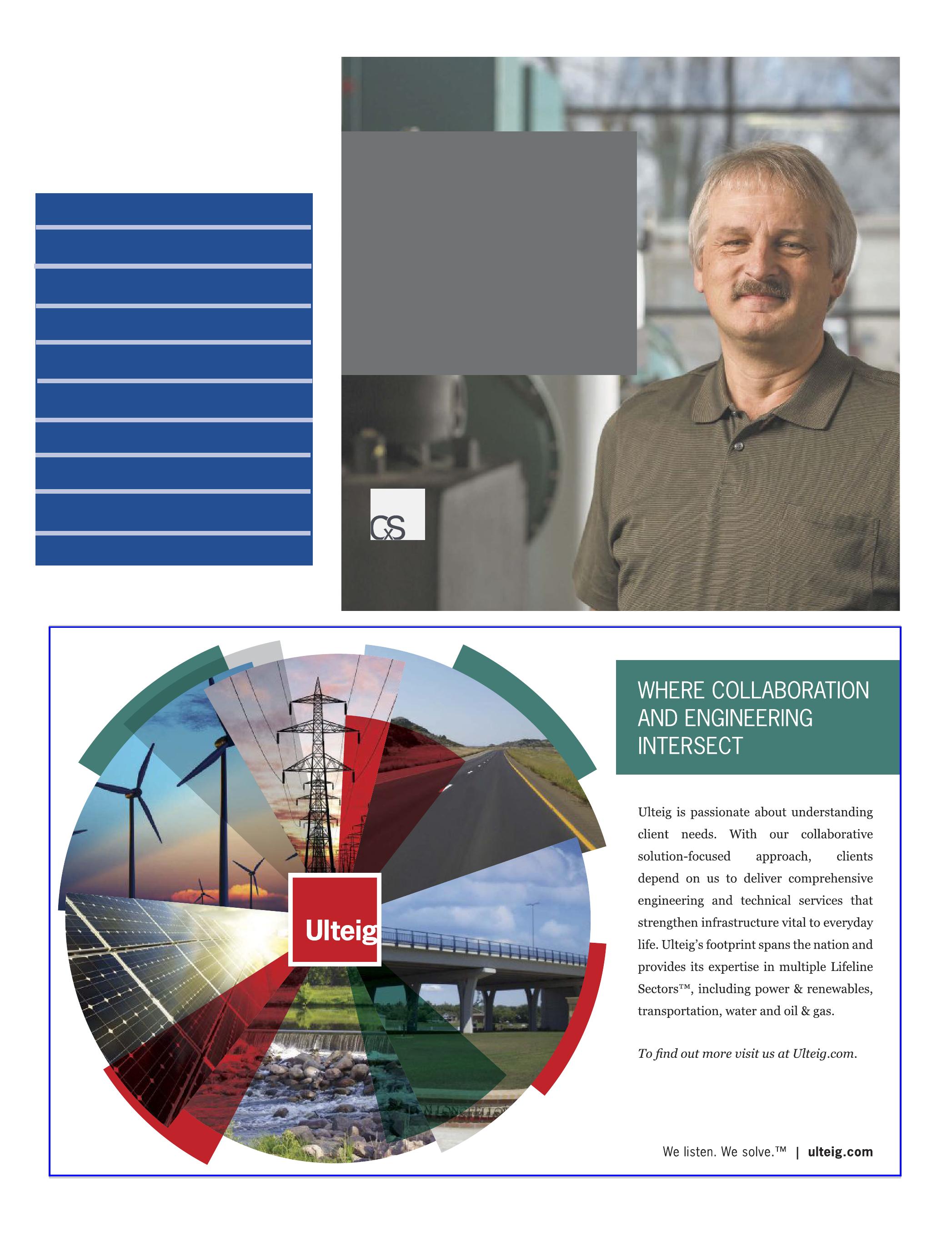
 BY LISA GIBSON
BY LISA GIBSON
Multiple types of halotherapy, or salt therapy, have been used around the world for centuries as alternative medical treatments, most often for respiratory maladies such as asthma or sinus issues. Prairie Breeze Massage in Brookings, S.D., has what its massage therapists think is South Dakota’s first salt room, and its customers are pleased with their results.
Salt Serenity opened its doors in November and already has regular patients, as well as new patients who want to see what it’s all about, says Brenda Lanz, a massage therapist at Prairie Breeze Massage. “It’s very new,” she says. She operates Salt Serenity with colleague Kristine Skorseth.
While the practice is common in many European countries, Lanz estimates there are about 160 or 170 salt rooms in the U.S.
“It just took a while to get to the United States,” she says.
At Salt Serenity, patients remove their shoes and enter a room with himalayan salt covering the floor and a partial wall, Lanz explains. While in the room, pharmaceutical salt — commonly used in hospitals for saline solutions and sanitization — is pulver-
ized and blown into the air within the room. Many patients say the drug-free, non-invasive treatment helps, Lanz says.
The Salt Therapy Association promotes the treatment’s benefits for respiratory issues, skin conditions, athletic performance, detoxification and even simple relaxation. “The dry salt naturally starts absorbing allergens, toxins and foreign substances into your lungs and throughout your respiratory tract,” the association’s website says. “Dry salt may help to reduce inflammation and open airway passages.”
Lanz says, “You know how you feel when you go to the beach — how it’s easier to breathe? It’s kind of that same concept.” PB
Lisa Gibson Editor, Prairie Business 701.787.6753 lgibson@prairiebusinessmagazine.comMidco Business has launched Hosted Phone, a service increasing mobility and flexibility for small to medium-sized businesses.
Hosted Phone lives on Midco’s 100 percent private Northern Plains Network, making it more secure than solutions that use the public internet. All Hosted Phone equipment and service is maintained by Midco at one of its data centers, meaning businesses don’t need to make big capital expenditures on a phone system or have in-house or third-party IT staff, according to Scott Smidt, vice president of business engineering and operations.
To set up Hosted Phone service for a company, Midco provides connectivity at the site through a cable modem or fiber and deploys phones to the employees’ desktops that look and feel like regular phones.
Businesses can also customize Hosted Phone to fit their needs, selecting from more than 25 features, including conference
calling, an auto attendant and a softphone that turns computers and mobile phones into their own business phone connection. Midco also offers a Hosted Phone app that users can download to their smartphones to answer work calls without giving out their personal cell phone numbers.
“You can’t take your desktop with you, until now,” Smidt says. “You can take calls from your cell phone, and no one will know where you are. It also provides a smooth transition back to your desk as people only have to call that one private line.”
Midco launched Hosted Phone in the Sioux Falls area in July and will expand availability across its footprint in early 2017. PB
Kayla Prasek Staff Writer, Prairie Business 701.780.1187 kprasek@prairiebusinessmagazine.comWomen who receive mammograms at the Edith Sanford Breast Center in Fargo, N.D., now will have more options to assess their individual breast cancer risk through a personalized risk assessment questionnaire. The service will be offered through an expansion of the existing partnership between ESBC, which is a part of Sanford Health, and the Athena Breast Health Network.
The questionnaire will inquire about personal medical history, breast health history, hormone history and family history to compile a personalized breast cancer risk profile. “With the answers provided, Athena will identify what risk factors a woman may have and how that increases her lifetime risk of developing breast cancer,” says Nancy Anderson, Sanford Breast Health Program coordinator and Athena Program breast health specialist.
Sanford patients who complete the voluntary survey and are found to be at elevated risk will be contacted by a breast health specialist, who will work with each woman individually to help her better understand her risk, connect her with resources to address risk reduction and assist in coordinating appropriate

breast cancer screenings. “Risk reduction and prevention strategies may include increased screening, surgical interventions, medications or lifestyle modifications to reduce the risk of developing cancer,” says Andrea Kaster, medical director of Sanford Breast Health Clinic.
No extra cost will be charged to complete the questionnaire or for the consultation with the breast health specialist, Anderson says. PB
Lisa Gibson Editor, Prairie Business 701.787.6753 lgibson@prairiebusinessmagazine.comUlteig Engineers Inc. has opened a new location at 216 S Broadway St. in Minot, N.D. Headquartered in Fargo, N.D., Ulteig now has nine locations in the U.S.: Fargo, Minot, Williston and Bismarck in North Dakota; St. Paul and Detroit Lakes in Minnesota; Sioux Falls, S.D.; Denver; and Cedar Rapids, Iowa. “Based on our current relationships in the area, we anticipate that we’ll be able to expand our offerings and address the needs of clients in the city of Minot, Ward County and other cities and counties in the area,” Craig Davies, Ulteig’s director of corporate marketing and communications, tells Prairie Business.
Doug Jaeger, president and CEO of Ulteig, says in a statement: “The time is right for us to increase our capacity in the area. We have strong local relationships who have encouraged us to build our presence in Minot. There is considerable investment being made in the public infrastructure and the surrounding commu-
nities, and we look forward to introducing our solutions-focused approach to even more clients who serve these critical markets.”
The Minot location also allows Ulteig to further capitalize on the capabilities of its recently created Field Services organization, according to a press release. “With expertise in land and surveying services, construction inspection and management, program management and testing and commissioning, the Field Services team can address the local need for comprehensive integrated solutions,” the release reads. PB
Lisa Gibson Editor, Prairie Business 701.787.6753
Barry Wilfahrt, president and CEO of the Chamber of Grand Forks, N.D., and East Grand Forks, Minn., has been named to the U.S. Chamber of Commerce’s Committee of 100. The CCC100 is an elite group of chamber CEOs from throughout the country who represent the perspectives and needs of chambers and their members to the U.S. Chamber.
Cornerstone Bank, headquartered in Fargo, N.D., has named Eric Carlson senior vice president and chief financial officer. Additionally, he serves on the Bank Management Board. Carlson joined Cornerstone Bank in September 2015 and has more than 21 years of experience in the financial services industry. He earned his master's and bachelor’s degrees in business administration from North Dakota State University in Fargo and is a Chartered Financial Analyst.
Altru Health System in Grand Forks, N.D., has named Trent Siemers its manager of anesthesia services. Siemers has been a certified registered nurse anesthetist with Altru for the past 14 years and an employee at Altru for more than 23 years. Siemers earned a Master of Science in Nursing degree from the University of North Dakota in Grand Forks.
Billie Madler, chair of graduate and distance nursing education at the University of Mary in Bismarck, N.D., has been inducted as a Fellow of the American Association of Nurse Practitioners. With more than 200,000 licensed nurse practitioners in the U.S., Madler is just one of 88 inductees nationwide. Established in 2000, the Fellows of the American Association of Nurse Practitioners serves to recognize nurse practitioner leaders who have made outstanding contributions to health care through clinical practice, research, education or policy.
Obermiller Nelson Engineering has hired Kristi Spindler as director of human resources at the company’s Fargo, N.D., headquarters. Spindler has a Master of Arts degree in Organizational and Human Resource Management from Concordia University in St. Paul, Minn., and a Bachelor of Arts in English from The College of St. Scholastica in Duluth, Minn. She has 11 years of experience in human resources.
The Red River Zoological Society has selected Sally Jacobson to serve as executive director of the Red River Zoo in Fargo, N.D. Jacobson has served as business manager for the Red River Zoo since 2012. She previously worked at Chahinkapa Zoo in Wahpeton, N.D. Jacobson graduated from Minnesota State University Moorhead with a Bachelor of Arts in Anthropology.
Kurt Lysne was recently named North Dakota’s 2015 Young Engineer of the Year by the North Dakota Society of Professional Engineers. Lysne is the water resources group leader in Moore Engineering’s West Fargo, N.D., office. Lysne graduated from North Dakota State University in Fargo with a degree in civil engineering. He is a certified floodplain manager and is a registered professional engineer in North Dakota.
Sara Hanstad has been named a business relationship manager for Wells Fargo in Fargo, N.D. Hanstad began her Wells Fargo career as a teller in Fergus Falls, Minn., and then was promoted to business associate. Most recently, she served as a credit analyst in Fargo. Hanstad holds a bachelor’s degree in business administration from Minnesota State University Moorhead, and a master’s degree in business administration from Liberty University in Lynchburg, Va.
Andrea Surovek, research scientist at the South Dakota School of Mines & Technology in Rapid City, has been named the recipient of the 2016 George Winter Award by the Structural Engineering Institute of the American Society of Civil Engineers. The award recognizes a structural engineer who best typifies the late George Winter’s humanistic approach to the profession: an equal concern for matters technical and social, art and science, soul and intellect. Along with a doctorate in engineering, Surovek holds a Bachelor of Arts in Theatre.

Nick Killoran started Great North Insurance Services in 2010 with zero clients. Since then, Great North Insurance has grown to 10 employees and was named Small Business of the Year at The Chamber of Fargo-Moorhead-West Fargo’s 2016 ChamberChoice Awards. Killoran was also one of the three finalists for Entrepreneur of the Year.

The idea to form Great North Insurance was born after working many years at a Fortune 500 financial institution. There were many times we tried to get loans approved for people and couldn’t get the necessary information from insurance agencies or agents in a timely manner. Our goal wasn’t to reinvent the wheel in regards to taking care of our clients. We just wanted to do it better and quicker. We continue to add additional products and now offer personal and business property and casualty coverage, life insurance, health insurance and disability insurance. Our team consists of 10 people and is well prepared for future growth in our business.
What haven’t we learned along the way? Business ownership is fun, scary and exhilarating all at the same time. The most important thing I have a greater appreciation for is that great people trump everything. We have the best teammates in our office and they have created a phenomenal culture for the office. I saw my dad and mom build a business from scratch so I knew it would be stressful, but I never imagined how scary it would be to ensure that every associate is given the opportunity to grow a career and succeed financially. It is still the greatest motivator that drives me each day.
The Fargo-Moorhead area is full of individuals that want to see our community thrive. We have a great housing market and support from all levels of government that want businesses to succeed. Small business is the key to low unemployment and a strong local economy. We continue to get amazing support from our community and that has only solidified our choice to start a business in Fargo.
I am not sure I have successfully managed work-life balance, but it is not for a lack of trying. My wife and I both are career-minded people that believe in giving back and like most parents, are extremely busy. For us, a busy schedule has actually helped us be better parents. The time we get with our kids is cherished and we believe in taking one or two family trips together each year. The balance that we continue to work toward is vital in our lives. I go to work each day in hopes of providing my family and team a better future and retirement.
We have faced plenty of adversity while getting Great North Insurance off the ground. We are one of the few insurance agencies that started without a single policy on the books. We actually started the business from my basement. Needless to say, I set a lot of our initial meetings at local coffee shops. Luckily, we were able to explain our business plan and a few people took a chance on us right away. Honestly, I wouldn’t do much differently. I am sure there are a number of things I could have done better or more efficiently, but that’s life. You just try to make the best decision you can with the information you have in that moment. PB
Kayla Prasek Staff Writer, Prairie Business 701.780.1187



kprasek@prairiebusinessmagazine.com


During the spring 2016 semester, Valley City State University students saved an estimated $82,000 through an expansion of the school’s use of open educational resources (OERs) as a substitute for costly textbooks. About 600 students that semester participated in classes using OERs, almost half of the university’s total 1,400 enrollment, says Julee Russell, a VCSU English professor who uses OERs in her courses.
One section of Russell’s Intro to Professional Writing course served as the first guinea pig for OERs during the fall 2015 semester. Seeing significant success, the concept has expanded to all sections of that course, as well as to about 12 more courses, in multiple sections. Another 10 instructors are gearing up to start the 2016 fall semester with the use of OERs in their classrooms. “Ultimately, students really liked having access to the resources right there, online, anytime,” Russell says.
OERs provide vetted course material for students online, eliminating the need for them to spend hundreds, sometimes thousands, of dollars on textbooks that might not ever see use after the course concludes. The OERs are accessible from anywhere with an internet connection, and many are adaptable to mobile devices. The fact that VCSU is a laptop university furthers the already-significant benefits of OERs to its students, Russell says.

College students don’t always understand how much textbook costs can add to their student loan totals, and how much interest they accrue by the time those loans are paid off years later, Russell says. “It sneaks up on students. I think they don’t really realize it. … Maybe if we can get more of these open educational resources involved in their education, they wouldn’t have to pay so long for their education.”
Carey Castle, vice president of academic and student affairs at Northland Community & Technical College, agrees. “It’s pretty expensive for books these days,” he says. NCTC has locations in East Grand Forks and Thief River Falls in Minnesota. “The key piece of this is trying
to figure out the best ways we can help our students get an opportunity to go through (college) and not spend a load of money.”
NCTC has a few classes that utilize OERs through a portal called Creative Commons, which VCSU also uses. “It’s still relatively new to us,” Carey says of OERs. “Not in concept, but in application.”
The main barrier to widespread implementation is the cost to switch over, which includes compensating instructors and professors for extra time putting together course materials and curriculums, he says. The materials can come from a variety of different repositories, so instructors can gather the best ones for a perfectly designed curriculum for each particular course. That’s a benefit, Russell says, but also eats up valuable time. “It’s much easier to go to a textbook publisher site, choose a textbook and order it,” she says.
VCSU received a $10,000 grant from the North Dakota University System to support professors and instructors in exploration and
College professors and instructors are increasingly designing their courses using free online resources that allow tailored curriculums and reduced textbook expenses for students
implementation of these resources, Russell says. Without that, as well as moral support from administration, VCSU would not have been able to make the progress with OERs that it has, she says. “Faculty members need support in this shift.”
Castle agrees, saying instructors do all the work in transitioning to OERs. “It becomes a pretty complex issue,” he says. Distance Minnesota, an online course consortium made up of NCTC, Northwest Technical College in Bemidji and Alexandria Technical & Community College, received almost $300,000 to help in the conversion. The funds came from Achieving the Dream — a national organization that helps grant access to education for all students — and is timely and helpful, Castle says. It will be used to overhaul 54 online courses within three programs: an Associate of Arts, health sciences broad field and child development.
At South Dakota State University in Brookings, Becky Jensen uses an etext concept for her community nutrition class. The service isn’t free, but represents a $60 savings on textbooks per student, she says. Jensen is an instructor within SDSU’s
Department of Health and Nutritional Sciences and program director of the nutrition and dietetics internship.
Students love the accessibility of the etexts, and the added interactive element brought into the course through additional activities and case studies incorporated into the etext curriculum Jensen has chosen.

“It adds another learning method for my students so that they can get beyond the classroom and get immediate feedback.”
Similar to Creative Commons, Jensen can customize the etexts for her course, adding links and notes into the reading material for her students, and she benefits from the program’s existing questions and activities. “I can spend my time making the classroom more engaging for students instead of coming up with questions.”
Because of those and many other benefits, online resources have been increasing in use but mostly in pockets, Castle says, with no widespread implementation across all universities and colleges. It’s not applicable to all classes, he adds. Russell agrees, but says general education courses are ideal for it.
“Some courses lend themselves to doing an OER concept, some of them not so much,” Castle says. “I think, in the long run, this is going to be, for the majority of students, a good option.” PB
Lisa Gibson Editor, Prairie Business 701.787.6753“It’s pretty expensive for books these days. ... The key piece of this is trying to figure out the best ways we can help our students get an opportunity to go through (college) and not spend a load of money.”
Carey Castle Vice President, Academic and Student Affairs Northland Community & Technical College

In Grand Forks, N.D., and East Grand Forks, Minn., the country’s first unmanned aircraft park is the big news, but the Community Profile roundtable discussion also highlighted the nearby Air Force Base, tourism, the exchange rate and collaboration to solve the workforce shortage
BY KAYLA PRASEKIt’s a busy time of growth and development in Grand Forks, N.D., and East Grand Forks, Minn., the site of Prairie Business’ third Community Profile. In a roundtable discussion with city, business and organization leaders, Prairie Business learned more about Grand Sky, the country’s first unmanned aircraft systems business and aviation park, and the cities’ role at the forefront of the UAS movement, the workforce shortage and efforts to solve it, and economic development efforts in the region.
Several organizations are in the midst of major construction projects, while the Grand Forks Region Economic Development Corp. has several potential companies on its radar. “The biggest story is Grand Sky,” says Keith Lund, EDC vice president. “Northrop Grumman is completing their facility (at Grand Sky), and it will be completed later this year, while General Atomics has a temporary hangar and will be finishing a permanent hangar. MinnKota (Power Cooperative) is completing their new campus, and the EDC is pursuing two agribusiness companies. We’re also still working with Northern Plains Nitrogen, who is seeking a primary funding partner to build here.”
Tom Kenville, chairman of UAI International, calls Grand Forks “the pulse” of the UAS industry “with all the right pieces here.” There are four phases of build out at Grand Sky, and those behind the project expect 1,000 people to eventually work out of the business park. Kenville says those jobs will be created by 15 to 20 businesses, plus many spin-off businesses. “These businesses can go wherever in the world they want, but they’ve chosen Grand Forks,” Kenville says. “We have a lower population, which means better communication with our politicians, plus we have partnerships with the Grand Forks Air Force Base, the state, local government, (the University of North Dakota) and (Northland Community & Technical College)."
The public-public-private partnership that helped bring Grand Sky to life is “visionary,” says Chris Wolf, market president for the northern valley at Alerus. “That collaboration with a lot of groups coming together is impressive,” Wolf says. Barry Wilfahrt, president and CEO of The Chamber of Grand Forks-East Grand Forks, notes the many firsts that Grand Forks accomplished in the UAS industry. “We had the first UAS park, the first UAS degree, the first location

that had a UAS flight that did not have a chase plane in non-restricted airspace and the first operational test site. It’s all part of a bigger story, as the community worked together to make it happen.”

In order to make Grand Sky a success, Wilfahrt says the two current tenants, Northrop Grumman and General Atomics, are looking for their staff to be 50 to 60 percent local hires. “The real key is, can we get those people to move here and can we fill those positions?”
On the flip side, Lund says bringing in 40 to 50 percent of staff is not a bad thing. “We need more people. A lot of the new hires will be from UND, NCTC, the Air (National) Guard, but they’ll bring in people from around the country and they’ll bring their families with them.”
While Grand Sky doesn’t necessarily have workforce shortage issues yet, other companies and organizations in Grand Forks and East Grand Forks are facing those shortages. Dave Molmen, CEO at Altru Health System, says “health care progressively in our country is probably going to be facing workforce challenges for decades to come,” which he attributes to the aging population in the U.S., and says Altru is no exception. Molmen says workforce has been challenging, especially in areas where the health care system competes across the country for professionals, such as doctors and nurses.
Bill Burga Jr., senior project director of global operations at LM Wind Power, says workforce wasn’t an issue until about two years ago. “A year and a half ago, we went outside our market looking for people for the first time. We’ve got commitments but we need the workforce to meet our commitments, so we sat down and said we need to do something and expanded where we were looking for people. That didn’t (solve) it, but it started the flow. It’s a good problem to have.”
The oil slowdown in western North Dakota hasn’t brought an influx of people into the workforce either. Tal Elseth, plant director at J.R. Simplot Co., says Simplot picked up a few in supervisor areas, but hasn’t seen an increase in those applying for hourly positions. “Our biggest issue is we’re 24-7 and people don’t want to work overnight shifts anymore.”
To help solve the workforce problem, Altru is “not just recruiting people, but trying to train more people,” Molmen says. “We’re going into Grand Forks and East Grand Forks schools, doing health awareness and hosting health career fairs. We also have great partnerships with UND and NCTC. We’re going to compete across the country, but the most effective thing we can do is grow it here because they’re people who like it here and have a strong work ethic.”
Wolf says Alerus has gone the same route as Altru, focusing on having a relationship with the students by being present at career expos, bringing in students to job shadow and promoting experiential learning and internships. Lund says the EDC has focused on career awareness, starting with Junior Achievement in the elementary schools and continuing through high school career expos. “It’s about getting someone connected to a job and keeping them here,” Lund says. “We need to do as good of a job as we can to keep those students around.”
Peter Johnson, interim vice president for university and public affairs at UND, and Maureen Storstad, director of finance for the City of Grand Forks, say those two entities joined forces for an internship program as well. “The city’s internship program has been great to create that bridge,” Johnson says. “It helps (our students) see the types of opportunities available. There’s been more of an emphasis on experiential learning at UND in the past 10 years with a greater focus on pushing them out the door to get their feet wet so they see there are opportunities here.”
Storstad says the internship program allows the interns to see different areas of a government job with benefits to both the city and the student. In East Grand Forks, Paul Gorte, economic development direc-
tor, says the city tries to have at least one intern, who learns about all the different offices and the range of what city government does. Gorte says the City of East Grand Forks works closely with NCTC. “It’s important because it’s a tremendous asset,” Gorte says.

As part of the effort to grow the city’s workforce, Grand Forks Mayor Michael Brown has focused on the city’s vibrancy through three committees dedicated to the arts, downtown and the city’s relationship with UND. “We’ve really looked at the downtown as an asset for our community and had discussions of how to make it better and more enjoyable for a larger group of people,” says Wolf, who is a member of the downtown committee. “We’ve looked at walkability and the possibility of having more things to do downtown.”
While the city focuses on attracting and retaining students and professionals, there’s also a renewed focus on attracting tourists. “The Canadian dollar is a definite struggle for us,” says Julie Rygg, executive director of the Greater Grand Forks Convention & Visitors Bureau. “We know Canadians are traveling here less often, but they still like coming here. They like to eat out, shop and stay for the weekend. … We know at some point it will turn around again.”
As a side effect of the slowed tourism, hotel occupancy is down but the city also has a larger inventory of rooms than it has had in the past. Gorte says
the campgrounds in East Grand Forks are full for the year, which he believes means tourism is picking up again.

The agriculture industry is also seeing some struggles, though Elseth says Simplot hasn't felt those effects. “We contract all of our crop every year. What we’re seeing is that potato prices are holding, but with other prices down, people want to get into potatoes so it’s helping us. On our commodity sides, they’re definitely seeing low prices and low profits because of the ag market.” Wolf says Alerus’ ag bankers have noticed their customers are still doing well, but not as well as they were three to four years ago.
Grand Forks continues to reap the benefits of the Grand Forks Air Force Base, which had a $220 million economic impact on the region in 2015, and the city was recognized as one of the top 10 defense communities this year. Wilfahrt and Gorte both say the community embraces the base in a way most communities with Air Force Bases don’t.

“I’ve been doing this for 13 years, and this is the one location that the ties between the community and the base are stronger than anywhere I’ve been, and I’ve been here nine months,” says Shaun Shenk, Grand Forks Air Force Base’s chief of public affairs. “The involvement and the way (the city) wants to nurture it and take it another step further is amazing. … We’re a reflection of the community we’re in. We can go to the community for an issue we’re having, and that’s invaluable to me, in my position, and to Col. (Rodney) Lewis, (base commander). That’s changing lives, when you can go to a community with a problem that they can fix.”
Wilfahrt and Gorte both mention their cities’ work toward creating healthy startup environments as well. “The good environment for entrepreneurs has been intentional,” Wilfahrt says. “We’re still working toward making it a better startup community, and we’re getting ready to have a meeting to bring all the partners together to see where the gaps are and how we can fill them in.” Gorte says East Grand Forks has focused on the many resources available from the state of Minnesota, especially as the city has seen more inquiries about starting businesses come in.
The cities have also made “tremendous strides forward in infrastructure,” Wilfahrt says, including UND’s med school and law school, the ICON Sports Center and Choice Health & Fitness. “We’re really in a good position.” The city’s top priority now is a water treatment plant, which is “absolutely viable for companies like Simplot. Keeping a company like that economically healthy is necessary,” he says. PB
 Kayla Prasek Staff Writer, Prairie Business 701.780.1187
Kayla Prasek Staff Writer, Prairie Business 701.780.1187
kprasek@prairiebusinessmagazine.com



Technology advancements, a labor shortage, proactive problem solving — these are among the topics that emerged when Prairie Business asked experts in varying sectors of architecture and engineering to disclose the major trends they’re witnessing in their fields. Some addressed challenges and how they’re being met, or discussed positive changes and how they’re propelling projects and processes forward into greater efficiency. Here’s a list of the 10 largest trends from those experts, in no particular order.
“Some people refer to it as the ‘war for talent,’” says Doug Jaeger, CEO of Ulteig Engineers, which is headquartered in Fargo, N.D. “I think that’s a little overdramatic, personally.”
Ulteig, which provides services in many sectors but often deals with power projects, has partnered with North Dakota State University, as well as high schools in the region, to help lessen the knowledge gap and grow the hiring candidate pool. A greater use of technology also can help, especially with savvy millennials, and an increase in remote employees makes that technology crucial, Jaeger says. The virtual workforce needs to be able to serve its clients effectively from anywhere, he adds.
Customers and the market seem to think of engineering services as a commodity, under the assumption that all firms are identical, Jaeger says. “We all have websites. We all have marketing material. We all have capabilities and we’re being treated as if we’re all equal and provide the same service, and people are looking for the lowest possible price to get that service.”
Ulteig combats that commoditization through three main strategies, he says. First, the company strives to create greater value. “Extend that relationship with our client beyond what they’re looking for.” The team works to solve problems the client didn’t know it had, he says, making Ulteig more than just a consulting firm that submitted a project bid. Second, Ulteig has added capabilities such as project management, construction oversight, planning, etc. Third, it invests in skill development to ensure a creative workforce made up of people who can work in multiple sectors and move between projects such as civil to road design or renewables.
In what Jaeger refers to as the lifeline sectors — power, water, transportation and fuel — clients of engineering firms face complex regulatory environments, aging infrastructure, limited funding and a high cost of failure.
“The challenge for us is to help them figure out how to prioritize their investments,” Jaeger says. It’s crucial for those customers to find funding and a creative vehicle to meet evolving regulations and get their projects done, he adds.
“For much of our past, utility infrastructure — especially buried pipelines — have been treated with a ‘break-then-fix’ mentality,” says Grant Meyer, client project manager for AE2S, which is headquartered in Grand Forks and engineers water-related projects. Meyer is located in Maple Grove, Minn.

Technologies are developing that allow better assessment of the actual condition of buried pipelines and other infrastructure making up water, wastewater and stormwater systems. Utility leaders and stakeholders are recognizing the value and importance of annual reinvestment in infrastructure, and providing financial support for proactive and predictive utility management programs, Meyer says.
“Engineers, in general, have historically tended to prioritize the technical solution to projects, and recognize that the project must also be financially feasible — or it simply won’t happen,” Meyer says. “However, there is growing emphasis on the environmentally and socially responsible aspects to engineering design.”
That encompases water conservation and reuse, energy conservation, impacts of process chemicals on the environment, byproduct recycling, low-impact construction and sustainability. Efficient, supplemental
renewable energy sources are continuing to pick up steam, construction technologies are being developed to minimize the effects on the surrounding environments, and materials are evolving.
Computerized control systems and cloud-based computing allow utility system operators nearly real-time information to continuously monitor performance, safety and security, as well as efficiently operate remotely, Meyer says. “This constant access to information is also prevalent through customers of utilities. Having become accustomed to real-time information, they have an expectation of real-time communication from their utility providers. … Media sources can rapidly provide a great deal of information to citizens/customers, and this can put pressure on water system professionals to respond quickly and completely.”
Meyer cites an example most people in the nation are familiar with: Flint, Mich. “The events in Flint raised awareness of potential water-related issues, and utilities throughout our region were nearly instantaneously in a position to defend the integrity of their local water supplies and responsibly address customer concerns.”
“Increasingly, our clients in both the public and private sectors are reconsidering capital investments, opting instead to leverage their dollars toward mission and enterprise growth initiatives,” says Michelle Mongeon Allen, chief operating officer for JLG Architects, headquartered in Minneapolis.
For example, university clients often want high-quality housing near campus, but rather than spending capital on building and operating rental housing, they often work through their foundations for those projects, and use capital to invest in research, state-of-the-art education facilities, etc., Mongeon Allen says.
The design of a building or project can elevate experiences with or in a company and impact its bottom line, Mongeon Allen says.
“Not mutually exclusive to strict budget adherence, our clients are increasingly aware that having the right architect can mean the difference between just getting a building constructed and engaging in a design solution that elevates their brand and changes the way they deliver their service,” she says.
“The drone revolution is coming to engineering firms, as improvements in navigation and sensory technology allow for automated and more precise data collection than was previously possible,” says Troy Kincer, senior vice president and chief operations officer for Moore Engineering, a West Fargo, N.D.-based civil engineering and land surveying firm. Photos and data collected from unmanned aerial systems are especially useful in areas that are hard to reach, including rivers, lakes, marshes or mountainous regions.
“The industry is still in the development and growth stage, but the unmanned aerial systems industry is booming and a day is surely coming when drones will be a standard, expected component of any surveyor’s toolkit,” Kincer says.
Historically, stormwater management has focused more on quantity control and less on water quality, Kincer says. “Most of our current stormwater infrastructure is geared toward collecting and removing it as fast as possible. Now, though, we’re being more deliberate in what we do with the stormwater once we have it harnessed...”
A greater emphasis on wildlife protection and recreational value of water bodies has led civil engineers to turn their attention to preventing stormwater contamination, allowing reuse.
“This change in mindset will require communities to rethink their approach to stormwater and retrofit their existing stormwater collection and conveyance systems to enhance their on-site approach to stormwater management,” Kincer says. PB
Lisa Gibson Editor, Prairie Business 701.787.6753 lgibson@prairiebusinessmagazine.com.
 BY KAYLA PRASEK
BY KAYLA PRASEK
When First International Bank & Trust decided to expand into Bismarck, N.D., the bank’s leaders wanted to make sure everyone knew they were coming to town. So they bought property at the intersection of State Street and Divide Avenue, the busiest corner in Bismarck and near the state Capitol building, and started construction on a six-story building.
The $40 million, 60,000-square-foot facility broke ground in May and is expected to open in October 2017. It was designed and is being constructed by Consolidated Construction, which is located in Bismarck and built First International’s branch in Watford City, N.D.

“Bismarck is a city we’ve been looking at for a long time, and we tried to buy banks there for the last 10 years but no one was selling,” says Peter Stenehjem, chief retail banking officer. “Finally we decided to build our own bank there, which means we can build our own culture and hire our own people.”
The six-story building, which will be First International’s largest bank, will feature a two-story glass atrium as the main entry and will be used for events. First International will occupy the first three floors of the building. The main level will be geared toward retail
and will feature teller pod systems instead of the traditional line of tellers, a few retail offices and a grand staircase that will connect the three floors of the bank. The second floor will house business banking services, while the third floor will be for the bank’s corporate functions, including a data center, trust and wealth management services, a large training room and a variety of conference rooms.
The bank’s interior will feature a modern look including dark woods, tall doors and a lot of glass to showcase the location’s great views, Stenehjem says.
The building will also include a rooftop patio, a restaurant on the main level and three floors of space available for lease. A three-level parking garage will be connected to the building.
“We’re in a great location, and we’re hoping the building will be a business hub for the city of Bismarck,” Stenehjem says, noting the glass atrium, rooftop patio and mixed-use building should all contribute to that. “We’re excited about the opportunity to be in Bismarck.”
First International’s expansion to Bismarck also gives the bank more hiring options and a centralized location. “This gives us the opportunity to put a full-service location in Bismarck, where we’ll be one of the major banks, and a marquee building adds to that,” says David Mason, Bismarck president. “As an organization, it allows us to hire any level of staff, including executive officers, and have them here (in Bismarck). By expanding here, we have access to a large talent pool that we didn’t have access to before because we didn’t have a location here.” Mason
says Bismarck will now be a major training space for the bank, as it provides a more centralized location for the bank’s employees to convene.
First International is also making an effort to ensure the city and its citizens know the bank is in it for the long haul, Mason says. “We’re a 106-year-old bank that doesn’t act quickly when we make decisions like this. We’re not just testing the waters, we’re investing in the community.” The bank’s employees have been out in the community, actively engaging with the city’s residents as part of that push, Mason says. “Hopefully you’ll see us where you don’t expect to see your banker and will see what kind of people we are and what kind of bank we are.”
While Mason and his team are focused on hiring and building a customer base, construction on the permanent facility is moving along. All of the dirt work is finished and concrete has been poured. In mid-August, the building’s steel beams started going in, and Stenehjem expects the majority of the frame to be finished by early December.
First International opened a temporary location at the same site in August 2015 and is up to 29 employees. The temporary location, which is operating as a full-service bank, will remain open until construction is finished. PB
Kayla Prasek Staff Writer, Prairie Business 701.780.1187 kprasek@prairiebusinessmagazine.com


Data provided by David Flynn, chair of the University of North Dakota Department of Economics. Reach him at david.flynn@business.und.edu.


New-well oil production per rig
New-well gas production per rig
August-2015 August-2016
New
1,149
Indicated
1,149
1,116 858 841
Legacy gas production change million
August-2015 August-2016
August-2015 August-2016
Indicated monthly change in oil production (Aug vs. Jul)
August-2015 August-2016
August-2015
August-2016
Indicated monthly change in gas production (Aug vs. Jul)
Indicated monthly change in gas production (Aug vs. Jul)

August-2015 August-2016
August-2015 August-2016
Indicated

If you set the bar at competence, how do you reach excellence?
Celebrating five years of different.



What is it about Ackerman-Estvold that makes us a great company?

Is it because our team works in a fun and flexible environment? Is it because our interns get real experiences in the field and on-site? Or is it the hands-on, community impacting work that employees in both locations get to experience?
We think it’s a combination of it all. Add unique and challenging projects, brainstorming sessions, teamwork and a honest desire to make a difference in our communities and you’ve got a sample of what makes Ackerman-Estvold awesome.
Experience the awesome with us! Visit our careers page on our website or look for us on Facebook and LinkedIn. #BringYourAwesome
At ONE, We Care about people. We Care about the success and wellbeing of our employees, clients and the communities in which we live, work and play.



www.obernel.com
BUILDING SYSTEMS
 McKenna Larson
Human Resources Specialist Ackerman-Estvold Minot, N.D.
McKenna Larson
Human Resources Specialist Ackerman-Estvold Minot, N.D.
QHow do you attract potential new hires?
A
AE leverages our culture and people to attract potential employees. We promote living, working and playing in the communities we serve. We want people to know they can be successful at both work and home when they join AE. Being different is what it’s all about.
Q A
What are some of the main factors potential hires are looking for in a workplace?
I find that most candidates are looking for work-life balance and flexible scheduling. The standard competitive pay, health care benefits and a fun work environment that doesn’t give you a case of the Mondays are also important. More recently, opportunities to grow within an organization and take on challenging projects have also been prevalent.
QHow important are benefits and work perks?
A

It is the No. 1 priority for most, especially millennials. People want time off. Missing a t-ball game or school program isn’t an option anymore. Providing flexible work arrangements and adequate vacation has been key in retaining and engaging employees. With rising health care costs, providing 100 percent paid family health insurance has also been crucial.
Q A
What are some of the most common mistakes potential hires make in interviews?
Not asking questions. Don’t you want to know what will be expected of you in the first three to six months? Being upfront and honest about what you expect from a company that hires you is also something that is overlooked. Clear communication and expectations set forth from the beginning sets both the employee and employer up for success.
Q A
Where do you look for new employees?
AE attends multiple career fairs and trade shows throughout North Dakota, South Dakota, Montana and Minnesota. We also post to job boards, use executive recruiters, have an active employee referral program and seek out candidates from the Midwest that might be interested in making a change. Our community involvement also provides another avenue when searching for qualified candidates.



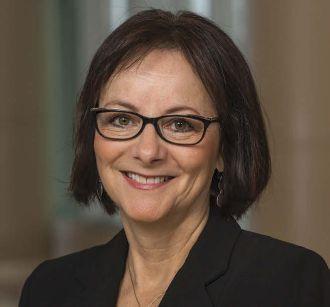















































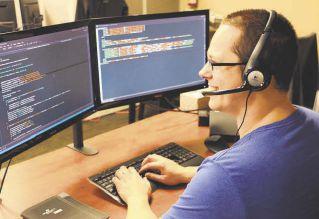





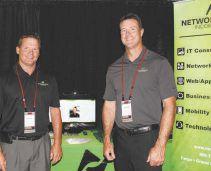


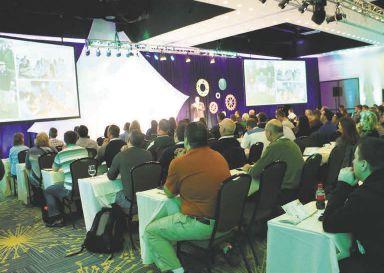

Go to college, not into college debt. For about $3,600 a year, BSC is your affordable choice. We offer generous scholarship and financial aid packages, low-cost housing and meal options.
Choose a two-year degree that will seamlessly transfer to a four-year university or a technical program that puts you into a good paying job in two years or less. FIND


bismarckstate.edu
224-5429 | 800-445-5073
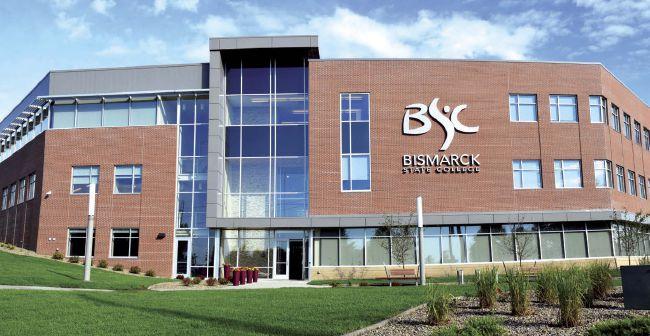



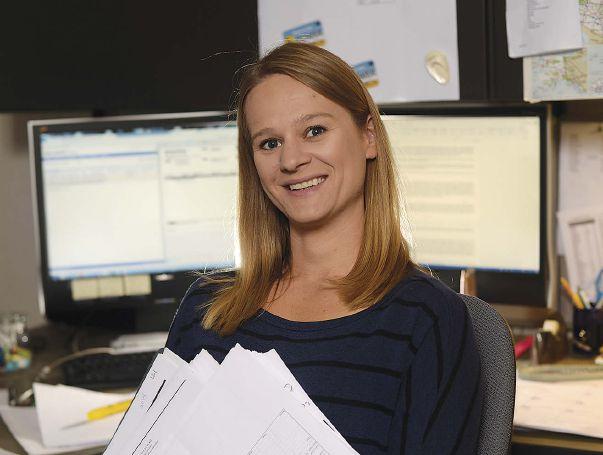






AThe answer to “Why is culture in the workplace important?” can be found in the definition of what culture is:
Culture can be defined as the set of behaviors, values and rituals that make up your organization. You can “feel” culture when you visit a company, because it is often evident in people’s behavior, enthusiasm and the space itself. It’s the energy that you feel when you visit or work for an organization.
One of the most popular contemporary business terms is “employee engagement.” In a 2015 Gallup poll, it was found that the average percentage of employees who were actively engaged in their organization averaged only 32 percent. The majority (50.8 percent) of employees were “not engaged,” while another 17.2 percent were “actively disengaged.” The 2015 averages are largely on par with the 2014 averages and reflect little improvement in employee engagement over the past year.
Gallup estimates that these actively disengaged employees cost the U.S. between $450 billion to $550 billion each year in lost productivity. They are more likely to steal from their companies, negatively influence their coworkers, miss work days and drive customers away.
Culture is a direct contributor to employee engagement. Clearly. A new employee decides within three weeks of their start date whether they want to stay with your organization or if they know they are going to move on. Managers and HR teams need to think about the “total employee experience” beginning the moment they extend an offer. Everything from the coffee in the coffee machine to the quality of management plays a role. That employee is making the decision from the moment they touch the handle of the employee entrance: If the cultural fit is missing, employees can become disengaged and dissatisfied before they have sunk their teeth into any significant work.
AOverall, yes, it’s a nice thing to have them in an employee handbook, or even stated on an application, job advertisements or promotional pieces. By having them outlined or promoted, it gives all team members, and potential team members, an opportunity to align to the organizational values. Part of the interview process is getting to know your potential teammates and deciphering whether their values align with your organization’s values.
An important note: If you write out your values, it doesn’t magically make everyone have those values. Values are most impactful when they are demonstrated and lived out by company leaders.
Any culture initiative that brings people together to share ideas, to celebrate, to inform, to engage or to simply be a part of a company event makes a huge difference. You may not see it instantaneously, but over time, the more you get people involved and ask for their participation, the more they want to contribute to the culture of their workplace. A great culture includes great people leading the way, so any time you can engage the leadership team to submerge themselves into an initiative, the more others will desire to be a part of that initiative and follow the lead. Leadership involvement is absolutely necessary in order for a culture to really flourish and provide an environment of positivity, creativity and fulfillment.
ACulture is something that is slow to change. Don’t expect it to change overnight.
I believe the first step is recognizing what your company culture is and taking a very honest look at it. My mentor Dan Gordon (senior human resource manager, LM Wind Power) taught me that if I want to know what a company’s culture really is, go to the lowest person on the organization chart and ask them what they like or don’t like about their organization. Be willing to ask for a neutral third party to do this and be willing to take the results. After this, gather information from cross-functional stakeholders, both formal and informal leaders of your organization, and get their ideas on what changes they would like to see.
When you establish the culture that you want to have, then make it happen. Evaluate yourself and your staff, and have honest conversations with those that will be champions for your company culture. Gain alignment through these conversations. Make changes in leadership if necessary.
The second step is to promote your culture. Promote through advertising your team as individuals and as a company. Use all of your available resources including social media. Promote your team, promote individual accomplishments, promote your company. This is not simply a cost, it’s an investment.
AKeep communication channels open, be transparent with what you are doing, where you are heading, the wins, the opportunities. Keep in constant communication with your team to let them know that they are part of the culture. Let them know that you value them and demonstrate it by letting them know of all the wins and of all the opportunities that may have been missed – but keep in front of them.
 IMAGE: EAPC ARCHITECTS ENGINEERS
IMAGE: EAPC ARCHITECTS ENGINEERS









Jaime Sibet graduated in May from the College of Business & Public Administration at the University of North Dakota with a bachelor’s degree in marketing with a minor in international business. She had three internships throughout her college career and received five job offers before she graduated. She is now employed as a national account sales trainee with Coyote Logistics in Minneapolis.
Q A
What would your ideal job be?
Well, honestly, my ideal job is a little fantastical, but my ideal job would be to run a company somewhere in Europe that planned weekend trips to major cities in Europe for students who are studying abroad, so they could get the best experience possible when they are there. A more realistic ideal job would be manager of sales for an international company and be able to interact and meet with people from all over the world.
QWhat are the main things you considered when choosing which job offer to accept (pay, community involvement, certain benefits, etc.)?
A
Pay is important when considering a job because those student loans won’t be that much fun to pay off, but most importantly, it was the culture of the company and the career opportunities it could offer. I don’t want to have to go to a job every day and not enjoy it, so feeling like I could fit in great with the company and really thrive there was the most important.
QWhat are the main deterrents you’ve come across from applying for jobs with any particular company?

A
I was able to sit down with a recruiter from a big corporate company from Minneapolis and they told me unless I have a family member or someone close to me working for their company, they weren’t going to really look at me because I didn’t graduate from the University of Minnesota or the University of Wisconsin-Madison.
QDo you think there is a gap between education and entering the workforce? If so, how can that be bridged?
A
Honestly, I think there are a lot of students who don’t realize the awesome resources Pancratz Career Development Center at our school offers (center director Kathy Lund helped me a ton and I owe a lot of it to her). There is a gap for some when they graduate because they never did an internship, or didn’t realize that they need to start job searching at the beginning of their senior year rather than the end of it. In my opinion, the best way to bridge it is preparing students with internships and career fairs long before they graduate.
QA Do you think young college graduates are more comfortable with intertwining their personal and professional lives than older generations have been?
I do think younger people prefer not to keep their personal and professional lives separate. It was a factor for me when I was looking for jobs because I feel that if there is a work environment where I can make friends, it would make going to work every day that much more enjoyable. Coyote has a very fun and “young” environment, which attracted me to the company. I was told everyone goes out to grab a drink after work often, which I felt was important because if I enjoy working with my coworkers, I will work harder.







 Kevin Thompson
Kevin Thompson
QWhat innovative measures are used by the University of Minnesota-Crookston Business Department to prepare its students for careers after college?
A
The UMC Business Department has a new initiative called the Business Student Community or BCrew. The project’s overarching goal is to develop a sense of community and connectedness among all business students (majors and minors) across our nine majors. Throughout the semester, the department sponsors professional or talent development opportunities as well as social activities. The monthly activities are designed to complement course work and extend learning outside of the classroom on important topics related to building professional skills that students may not cover in courses in their particular discipline of study. These topics, many of which are presented by area business leaders, include cultural competency, business start-up, communication skills, time management and mindfulness, etiquette, networking, business tours, personal branding, etc.
QDoes the school partner with industries to develop relevant curriculum based on what employers look for in new hires?
A

Every academic program at UMC has a Program Improvement Advisory Committee. PIAC membership includes practitioners from the discipline’s business community. For example, the marketing PIAC includes marketing professionals from different business sectors. The practitioners provide important information to the program faculty regarding curriculum, trends in the discipline and workplace, interdisciplinary suggestions, software usage, internship opportunities, etc. This powerful connection between faculty and the business community ensures that our academic programs are aligned with current practice, preparing students with the necessary knowledge and skills to transition very easily into positions upon graduation.
In addition to the program-specific feedback previously mentioned, our business community partners have provided suggestions applicable to all business students preparing for today’s workplace. Not surprisingly, our partners emphasize the importance in preparing students with nondiscipline-specific professional skills. These skills and attributes pertain to being a dynamic contributing team member and include problem-solving, creativity, collaboration, positive attitude, strong work ethic, flexibility, adaptability, interdisciplinary focus and cultural competency for today’s increasingly diverse global workplace (domestically and internationally). The goal is to use this valuable feedback to enhance our curriculum and course delivery as well as to focus our programing for the department’s Business Student Community (BCrew).
The vast majority of UMC students are required to complete an internship course as part of their program requirements. In addition to providing students with a valuable learning opportunity to apply what they’ve learned in their course work and gain new skills, internships also provide a great networking opportunity for students to connect with working professionals. It is not uncommon for students to be offered full-time positions upon graduation within the companies that hosted their internships. The UMC Career Development Center is a key resource for students during their career search efforts. The center provides personalized attention by utilizing both campus-specific resources as well as the significant resources of the University of Minnesota system. Some of these valuable resources include the annual on-campus Career and Internship Fair, GoldPass (an internet-based tool connecting students and alumni with employment opportunities around the world), workshops and webinars, Interview Stream (interview preparation software), etc.
Q A
UMC uses social media as if we were an actual individual. It showcases the campus personality. This includes a daily slice of campus life to showcase students, faculty and alumni achievements, shared in 140 characters or less, in photographs and in information on Twitter, Facebook, Instagram, Snapchat, etc. Interest on our social media profiles is boosted when students share their college decisions. It also serves as a way for alumni to network with one another and students to engage with alumni, and as a place for parents to see what their students are involved in or engage with the campus.
Social media is bigger now than ever as a way for students to have a view of campus life before they make their decision or before they move to campus.



































SPECIAL EDITION







Coming September 2016

Prairie Business Magazine is excited to announce that we are publishing an additional edition in 2016. In September, we will produce a magazine entirely focused on the construction industry. We will share trends, projections and feature leaders working in the construction industry, as well as some of the major projects that are underway in our coverage area.

We’ll also be talking with banks for tips on finance options and with architects and engineers. We plan to profile a construction worker and a student pursuing a degree in engineering. Plus, we’ll take a look at job site safety.

We invite you to participate in this special edition with an advertisement focused on how your business is involved in the construction industry. Prairie Business is read by business leaders, current and future decision-makers and entrepreneurs. Our goal is to provide a comprehensive vision of construction and its impact on the vibrancy of our communities.
Advertising Space Deadline:
























Friday, August 19, 2016
Advertising Materials Deadline:

Tuesday, August 30, 2016

A culture that emphasizes professional development, lifelong learning and giving back.
KLJ continues to grow, reaching beyond its traditional regional boundaries, and as it grows, the company continues to emphasis how important people are to the Company and communities in which we live and work.
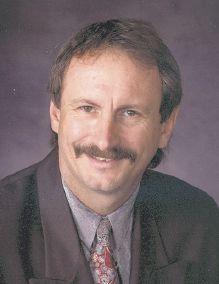
Rick Leach leads KLJ’s Survey group and has demonstrated great leadership throughout his 32 years – and counting. “I come to work each day believing if we perform well, fulfill our job responsibilities and everyone goes home safe, we had a good day,” said Leach.
“We all share in the Company’s success.”
Ariana Barnick joined KLJ three months ago. She chose the Company after extensive research. “The size and direction of the Company was a good fit for me,” Barnick said. “KLJ’s winning strategies have proven that the Company is a leader in the industry.”
“It is great to hear how many of the Company’s leaders started in entry level positions and worked their way up.”
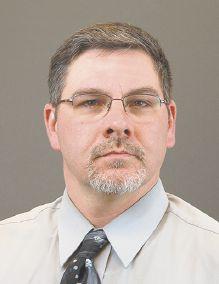

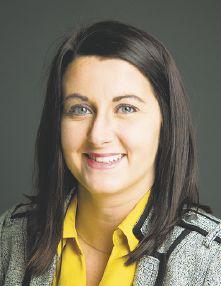
Shari Eslinger is actively involved in KLJ’s internal Young Professional Development Program. “The program embodies the Company’s future direction,” said Eslinger.
“You learn the structure, values and culture which allows understanding of the Company’s meaningful and challenging work along with competitive compensation and benefits.”
As KLJ’s safety director, Troy Clark ensures safety remains a cultural imperative. “Our safety numbers prove the Company’s dedication to our people,” said Clark.
“As people look for careers, they can feel confident, knowing that they will come to work in a safe environment.”
To learn more about career opportunities available at KLJ, visit kljeng.com/index.php/careers